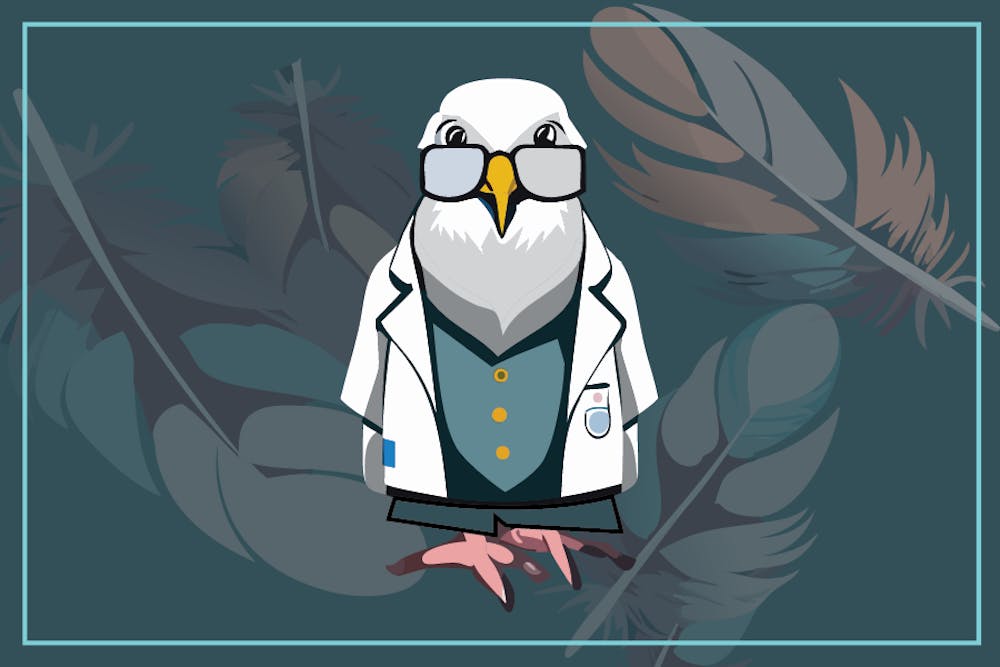From carrier pigeons' purpose in both World Wars to canaries warning of toxic fumes, birds have lent a wing to help humans for decades.
Currently, their physiology is being studied for human medical studies spanning several different conditions. Researchers, including those at ASU, believe that if specific elements of the birds' bodies could be compared to humans, it could help understand various cardiovascular and neurological diseases.
Dr. Karen Sweazea is an associate professor in the College of Health Solutions at ASU. Her research focuses on the study of glucose in birds, which were chosen for study for their unique vascular systems.
"Birds are pretty unique among vertebrates; they have incredibly high blood sugar," Sweazea said. "It's anywhere from two to seven times our blood sugar concentrations."
Her hope with this research is to be able to help individuals suffering from cardiac diseases involving high glucose levels.
"If we had two-to-seven times our normal blood sugar level, we would be considered diabetic," Sweazea said. "That would result in a lot of the pathologies that you see with diabetes, such as nerve damage and vascular damage."
According to Sweazea's research, this is a normal state of a bird; they do not exhibit many of these problems. They have evolved to this state of natural implementation. She hopes to learn from them about living a healthy lifestyle and combat diseases associated with high blood sugar.
While the cardiovascular system of birds is critical to understanding humans, it is not the heart of the matter. Brains in avian species have just as much potential to learn from.
Pierre Deviche, a professor at ASU's School of Life Sciences, has been studying birds for over 40 years. His research explores birds' brains and how they can regrow brain cells at a much faster rate compared to other creatures.
Deviche believes that if humans could achieve the ability to regrow brain cells in a similar fashion, it could help those suffering from strokes or brain damage.
"What (birds) can do is produce new cells in some of their brain regions on a seasonal basis and on a massive scale," Deviche said. "To think of potentially repairing a damaged brain right after a stroke and (regenerating) the cells being lost - We cannot do that yet, but in the long term, we hope that some studies that are being done on birds could at least help us understand what's going on."
Christopher Olson, an associate professor at Midwestern University, is currently studying the vocal communication in birds and how their brains allow them to sing. Olson's studies have specifically involved the vocal learning process in birds and how it could be translated to humans.
"Birds and humans are true masters of vocal learning, and for that reason, we have gone to the bird to study how circuitry in the avian forebrain allows for the learning and production of complex learned motor patterns that allow for vocalizations," Olson said.
Vitamin A, a nutrient shared with humans, was discovered to play a critical role in this process. Olson said he has been mostly looking at Vitamin A as a "signaling molecule" in the development and function of the part of the brain responsible for vocal learning and singing.
"We are finding that Vitamin A nutrition is important not just during early life and development," Olson said. "But can also throughout life and into old age."
This means that many neurological issues could possibly be moderated through Vitamin A nutrition, given a better understanding of the role it plays in bird brains. While the human body can't currently adapt to the changes that birds can, research efforts are bringing medical knowledge closer to that reality.
Edited by River Graziano, Walker Smith and Shane Brennan
Reach the reporter at hrhea@asu.edu.
Like The State Press on Facebook and follow @statepress on X.

Hunter is a senior studying technological leadership. This is his fourth semester with The State Press. He has also worked as a legislative intern.




